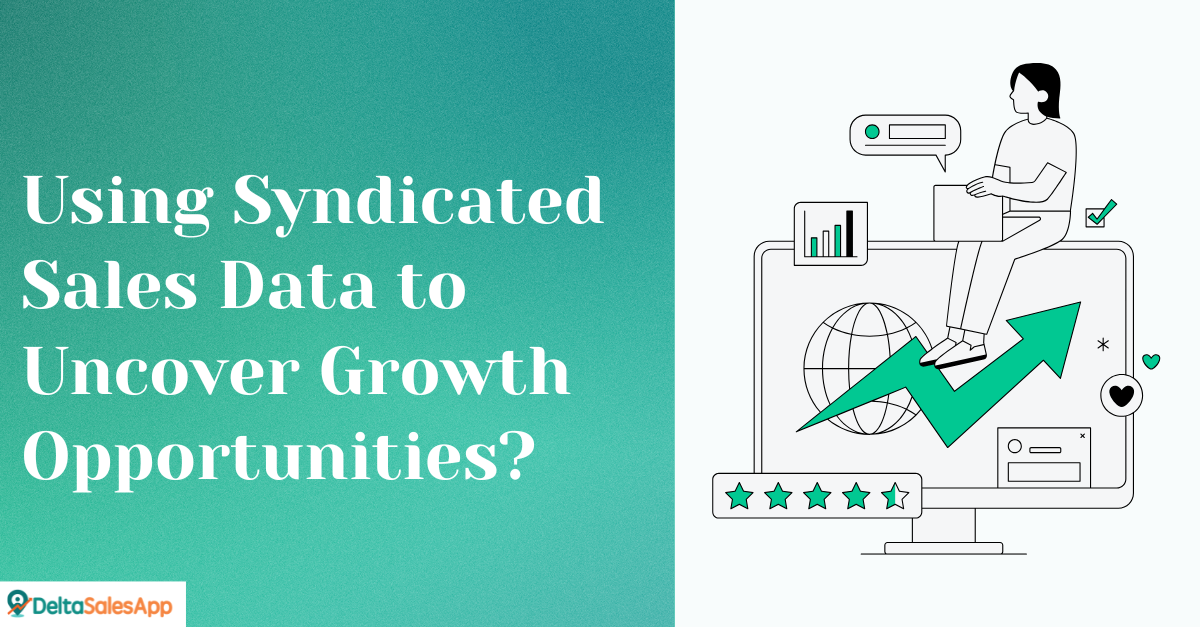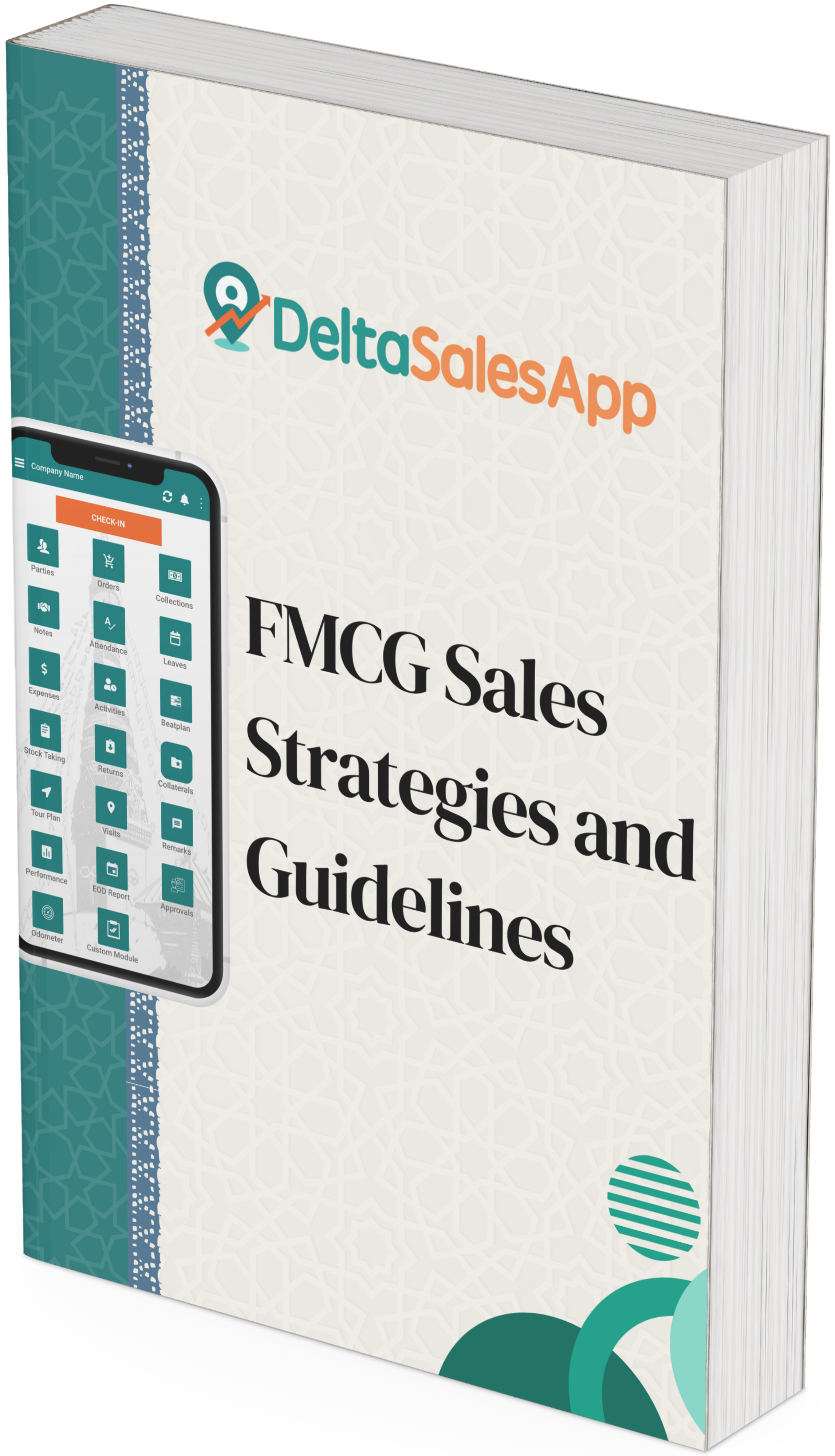How Field Teams Can Use Syndicated Sales Data to Uncover Opportunities for Growth?

For CPG brands, having visibility into what happens after products arrive in-store is critical. While distribution data tells you what was shipped and where, it doesn’t explain what happens between the backroom and the shopping cart.
That’s where syndicated sales data from providers like IRI or Nielsen becomes a game-changer. It shows exactly what consumers are purchasing — and where gaps exist in performance. Traditionally, this data was used by category managers and shopper marketing teams. But now, forward-thinking field sales and merchandising teams are using it to make smarter, faster decisions on the ground.
When used in combination with tools like a Delta Sales App, distribution management software, or a direct store delivery app, syndicated data can help your team drive sales, correct execution issues, and take advantage of growth opportunities in real time.
1. Identify Underperforming Stores Using Sales Trends
One of the most effective ways to use syndicated data in the field is by tracking store-level sales performance over time. A sudden drop in sales at a specific location might be the first clue that something has gone wrong — like poor shelf placement, a missed promotion, or product being moved off-shelf.
Rather than sticking to a pre-set store route, your field team can use real sales trends to:
Prioritize visits to underperforming locations
Uncover execution gaps between visits
Take corrective action before sales are lost
This targeted approach ensures reps focus on the stores where they can have the biggest impact — driving revenue and maintaining brand consistency.
2. Catch Out-of-Stocks Before They Hurt Sales
Nothing hurts momentum like an empty shelf. If a high-demand product isn’t available in-store, shoppers may turn to a competitor, and you may lose that customer permanently.
Syndicated sales data helps field teams detect when a product stops selling in a store, even if the shelf isn’t empty. This early warning system allows teams to:
Identify inventory issues between visits
Restock efficiently using a direct store delivery app
Avoid missed sales and poor shopper experiences
By responding before the issue becomes visible in-store, your team can keep products on shelves and maintain customer loyalty.
3. Detect and Resolve Distribution Gaps
Sometimes a product isn’t just out of stock — it’s no longer being carried at all. These distribution voids can quietly eat away at your sales without ever showing up as a physical issue in the store.
By comparing your expected distribution list with actual store-level sales data, you can identify when a product:
Has fallen out of rotation
It was never placed on the shelf despite being approved
Needs to be reintroduced to the store
Using distribution management software, your team can automate this process and prioritize resolving the longest-standing gaps first. This ensures your products stay where they’re supposed to be — and continue contributing to your bottom line.
4. Equip Your Field Team With Real-Time Sales Insights
The true power of syndicated data is unlocked when your reps can access it directly in the field. With store-specific sales performance at their fingertips, they’re empowered to make smarter, faster decisions.
Instead of relying on memory or guesswork, your reps can:
Identify which products are slowing down and may need support
See which locations are growing and may deserve added attention
Show buyers real data to back up their recommendations
For example, if a rep sees that a certain item is consistently selling out at a store, they can make a case for expanding its shelf space or ordering in larger quantities. With data in hand, reps position themselves as retail partners, not just vendors.
Why It All Matters?
Syndicated sales data isn’t just a reporting tool — it’s a field execution asset. When combined with the right technology, your team can stop reacting to problems and start acting on opportunities.
Whether it’s through a distribution management software that monitors gaps or a direct store delivery app that supports quick replenishment, giving your team the tools to act on data creates a faster, more agile retail operation.
In today’s competitive CPG environment, speed and insight can be the difference between growing shelf share and falling behind.
Final Thoughts
Syndicated sales data is far more than just a reporting metric — it's a strategic asset. When harnessed correctly, it turns every store visit into an opportunity for growth. By giving your field teams access to real-time insights about what's happening at the shelf, you enable them to take proactive, data-driven actions that improve execution and drive revenue.
Whether it’s spotting a drop in sales due to poor placement, catching a potential out-of-stock before it happens, or identifying distribution voids that are costing you sales — the combination of syndicated POS data, a modern field sales app, distribution management software, and a direct store delivery app creates a closed loop between insight and action.
The result? Faster decisions, stronger retail execution, improved relationships with store managers, and ultimately, more products in shoppers’ carts. In today’s fast-moving retail environment, that kind of agility and visibility isn’t optional — it’s a competitive edge.
FAQs
Q1: What is syndicated sales data, and how is it collected?
A: Syndicated sales data is collected at the point of sale (POS) by providers like Nielsen and IRI. It captures real purchases made by consumers in retail stores, helping brands track performance across locations and regions.
Q2: Why is POS data important for field sales teams?
A: POS data helps field reps understand what's happening between store visits. It shows which locations may have execution issues, out-of-stocks, or new growth opportunities, allowing teams to prioritize their efforts.
Q3: What’s the difference between a stockout and a distribution void?
A: A stockout is a temporary inventory issue where a product sells out. A distribution void is when a product is no longer carried in a store, either due to oversight or disconnection from the planogram.
Q4: How does a field sales app support this process?
A: A field sales app helps reps access real-time sales data, conduct audits, submit orders, and plan visits — all in one place. It makes acting on syndicated data seamless and immediate.
Q5: What role does distribution management software play?
A: Distribution management software helps brands track where their products should be available and flags when those placements go missing. It ensures a wide and consistent product presence across stores.
Q6: Why use a direct store delivery app in this context?
A: A direct store delivery app allows reps to manage deliveries and restocking directly at the store level, ensuring products are replenished quickly and efficiently when stockouts are detected via POS data.
Confused between Distributor Management and Distribution Management?
Understand the real difference between Distributor Management software and Distribution Management software—and how choosing the right one at the right time can drive efficiency, boost sales, and support scalable business growth.
👉 Read More here









